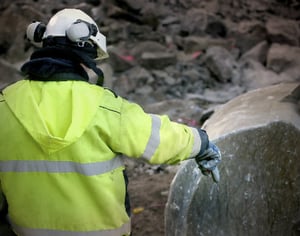
Experts agree that improved safety contributes to profitability in many ways. Costly incidents are avoided. Employees naturally become more emotionally and physically invested in their work. Workforce turnover goes down, while productivity and quality go up.
Cost savings increase as the management experience around safety processes extends to the entire organisation. For example, some Work Safety Hub clients report that our change management processes provided a model for cultural transformation that helped them alter other productivity-reducing behaviors. Others have said our processes establish clear lines of communication that extend from the shop floor up to the highest levels, enhancing the organisational processes as a whole.
Benefits from strategic management of health and safety includes:
1. Save on absences and sick leave costs
Improving health and safety measures at the workplace reduces the likelihood that people will need to take sick leave.
2. Save money on the direct and indirect costs of absence.
Direct costs include:
- paying the salary of the absent employee
- overtime incurred by other employees covering for the absent employee
- loss of output incurred by the absent employee
Indirect costs include:
- the time taken for a replacement to learn the new role and become productive
- possible diminished services and product quality
- loss of business, continuity and reputation
- recruiting temporary or replacement staff
- training and providing support to other staff
The sooner you take positive action to reduce absence, the sooner your sick employee can return to work successfully and get on with helping you build your business.
3. Save recruitment costs and retain staff
If you reduce employee absence due to illness or accidents caused at work, you will keep your valued staff.
Save the time and costs of recruiting and training a new member of staff.
These costs include:
- allocating someone to recruit a new member of staff
- searching and advertising for a new member of staff
- conducting interviews with potential candidates
- training replacement staff
- setting up short-term contracts
- possible drops in productivity as a new staff member comes up to speed with the work required on the post.
4. Enhance your reputation and therefore Brand Equity
Preventing accidents and ill health at work helps you enhance your reputation with your clients and workers, as well as their friends and associates.
You have worked hard to build a positive and respectable image for your business. It's vital that your business keeps that good name. Good public relations increase sales and generate more leads.
If your company comes into disrepute for any reason, including avoidable injury or accidents in the work environment, or continued employee ill health, it can cost you more than replacing that member of staff.
You can expect:
- a media grilling
- negative public opinion that is hard to reverse
- fines
- unwanted attention from pressure groups
- disastrous sales
- reduced profits and revenue
It can take time to recover and get your business up and running again. But it's easy to prevent damage to your health and safety reputation by implementing a simple and effective programme of control to manage the risks.
5. Boost productivity and profits $$
Improving health and safety helps you improve morale and productivity in your business. Your workers can do their work with less difficulty and less danger. They will appreciate improvements you make to their working environment. This can save you money and add to your profitability in the long run.
Stress and accidents at work are two of the biggest causes of absence from work today. Whether they cause short, unscheduled absences or long-term illness, they can have a serious impact on your productivity and profits. If workers have to cover for an absent colleague it can put additional pressures on them, contributing to increased absence in the longer term.
6. Save insurance costs
Saving on the cost of employee incidents and ill health is an investment in the future of your business. Maintaining a good standard of health and safety in the workplace can mean lower insurance premiums and more money in the bank.
You are responsible for the health and safety of your employees while they are at work. With very few exceptions, employers must have compulsory Workers Compensation Insurance to cover for injuries and ill health experienced by their employees while at work.
Employers may also have insurance for accidents involving vehicles, and possibly third-party and buildings insurance. Insurance policies, however, only cover a small proportion of the costs of accidents.
Costs not covered by insurance may include:
- sick pay
- lost time
- damage or loss of product and raw materials
- repairs to plant and equipment
- overtime working and temporary labour
- production delays
- insurance investigation time
- fines
- loss of contracts
- legal costs
- loss of business reputation
Uninsured costs can outweigh the insured costs – and these uninsured costs come straight off your company's 'bottom-line' profits. Poor health and safety procedures could mean increased insurance premiums or difficulty in obtaining future insurance cover.
7. Legal costs
Good practice in health and safety keeps you out of court, and in credit with the bank. The legal costs of poor health and safety practice can ruin a business.
They include:
- Compensation you pay to workers who have suffered injury or illness
- Solicitors' fees
- Paying your staff to administer the legal case
- Fines


